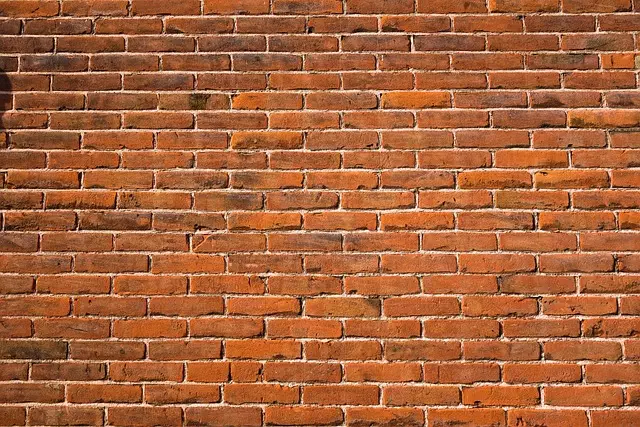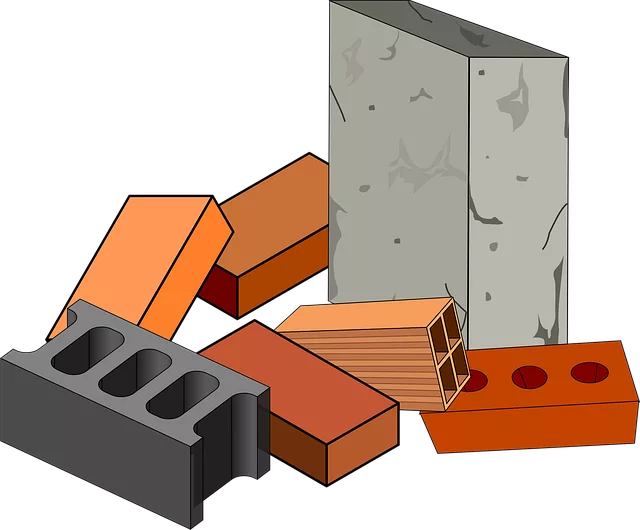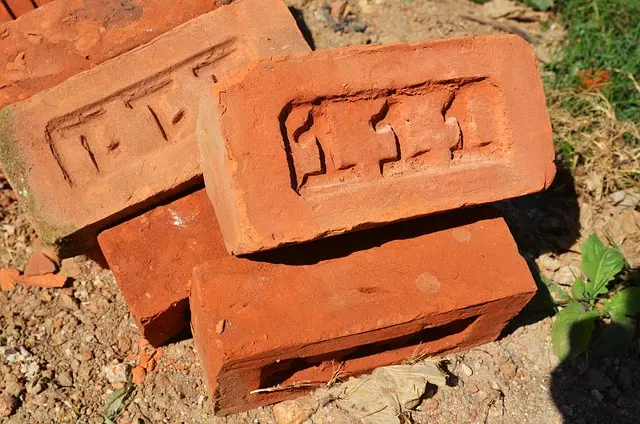Oak Harbor, Ohio has pioneered sustainable practices in brick work construction, transitioning towards eco-friendly materials and innovative building techniques that align with environmental goals. The town's initiative includes using recycled bricks, compressed earth blocks (CEBs), and fly ash bricks to reduce waste, lower carbon emissions, and promote resource efficiency. The local construction industry has embraced these sustainable alternatives while adapting brick laying methods to accommodate the unique properties of eco-bricks. Techniques like dry-stacking, eco-adhesives, and optimized rainwater harvesting are being used to enhance both environmental benefits and economic savings for property owners. Oak Harbor's efforts in integrating permeable paving systems and high thermal mass bricks into passive solar design further exemplify its dedication to sustainable building practices, showcasing the town as a leader in green construction solutions that balance aesthetics, structural integrity, and environmental stewardship.
explore the transformative potential of eco-friendly brick options within the realm of sustainable construction in Oak Harbor, Ohio. This article delves into the environmental advantages of green alternatives to traditional brick work construction, highlighting their unique benefits and the innovative types available. From mastering energy-efficient brick laying techniques to understanding the evolving role of eco-bricks in modern building practices, we’ll provide insights and real-world case studies from Oak Harbor that demonstrate the tangible impact of these sustainable choices. Join us as we navigate the shift towards greener construction methods, emphasizing ‘Types of Brick Work’ and ‘Brick Laying Techniques’ that are pivotal in this eco-conscious movement.
- Exploring Eco-Friendly Brick Options for Sustainable Construction in Oak Harbor, Ohio
- The Environmental Impact of Traditional Brick Work vs. Green Alternatives
- Innovative Types of Eco-Friendly Brick and Their Unique Benefits
- Mastering Brick Laying Techniques for Energy-Efficient Structures
- Understanding the Role of Eco-Bricks in Modern Building Practices
- Case Studies: Successful Implementations of Green Brick Work Construction in Oak Harbor, Ohio
Exploring Eco-Friendly Brick Options for Sustainable Construction in Oak Harbor, Ohio

In Oak Harbor, Ohio, the construction industry is increasingly turning to eco-friendly brick options as a sustainable building material. Brick work construction in this region has traditionally played a significant role in shaping its landscape, and with the growing awareness of environmental impact, there’s a shift towards greener alternatives in brick types and laying techniques. These sustainable bricks are not only crafted from locally sourced, recycled, or eco-friendly materials but also have a lower carbon footprint compared to traditional clay bricks. This move aligns with the broader environmental goals of reducing greenhouse gas emissions and promoting energy efficiency in building practices. Homeowners and builders in Oak Harbor are exploring various types of brick work that offer durability and aesthetics while adhering to eco-conscious principles. The integration of advanced brick laying techniques further enhances the sustainability of construction projects, as they optimize material usage and minimize waste. By opting for bricks made with fly ash or recycled content, and utilizing methods like rainwater harvesting during the bricklaying process, the construction sector in Oak Harbor is paving the way for a more sustainable future. The evolution in types of brick work includes options such as permeable paving bricks that allow for better water management and reduce runoff. These innovative approaches to brick laying techniques not only contribute to environmental conservation but also offer long-term economic benefits, making them a smart choice for both the planet and property owners in Oak Harbor, Ohio.
The Environmental Impact of Traditional Brick Work vs. Green Alternatives

Traditional brick work construction, a common building method in areas like Oak Harbor, Ohio, has long been a staple in the field of construction due to its durability and versatility. However, the environmental impact of conventional brick production is increasingly coming under scrutiny. The process involves significant energy consumption, substantial emissions of carbon dioxide, and the depletion of natural resources. Each ton of brick produced results in about one ton of CO2 emissions, highlighting the necessity for more sustainable alternatives.
In contrast, green alternatives in brick work are emerging as a more environmentally conscious choice. These eco-friendly options include recycled bricks, compressed earth blocks (CEBs), and fly ash bricks, each offering benefits over traditional methods. Recycled bricks reduce waste by reusing materials, CEBs utilize locally sourced soils to minimize transportation emissions, and fly ash bricks incorporate industrial byproducts, thus decreasing the demand for raw materials and lowering the carbon footprint of brick work construction. Additionally, innovative brick laying techniques such as dry-stacking and the use of eco-adhesives can further reduce the environmental impact. These methods not only promote sustainability but also reflect a commitment to the well-being of the environment in regions like Oak Harbor, Ohio, where the importance of preserving natural resources is paramount. Types of brick work that incorporate these green alternatives demonstrate a significant shift towards more responsible construction practices.
Innovative Types of Eco-Friendly Brick and Their Unique Benefits

In recent years, the construction industry has seen a shift towards more sustainable practices, with eco-friendly brick options becoming increasingly popular. In Oak Harbor, Ohio, and beyond, builders and architects are exploring innovative types of brick that offer both environmental benefits and unique advantages over traditional bricks. One such option is the use of recycled bricks, which not only reduce landfill waste but also contribute to a project’s sustainability credentials. These bricks can be sourced from deconstructed buildings or manufactured with a high percentage of recycled materials, minimizing the environmental impact of new construction. Additionally, their integration into brick work construction in Oak Harbor, Ohio, aligns with local and regional efforts to promote green building practices.
Another eco-friendly alternative gaining traction is the use of plant bricks, which are grown from seeds and sunlight rather than fired in a kiln. These biological bricks have a lower carbon footprint and can be produced using less energy compared to traditional brick making processes. They also possess remarkable insulation properties, reducing the need for heating and cooling in buildings, thereby saving energy over the lifespan of the structure. Moreover, their unique composition allows them to absorb CO2 from the atmosphere as they grow, further contributing to environmental sustainability. When it comes to types of brick work and brick laying techniques, these eco-friendly options require specific methods to ensure their optimal use in construction. Professionals must adapt their bricklaying techniques to accommodate the different weights, sizes, and properties of these sustainable bricks, ensuring that they are properly integrated into the overall structure while maintaining durability and aesthetic appeal. The adoption of such materials not only reflects a commitment to environmental stewardship but also showcases the evolving nature of brick work construction in Oak Harbor, Ohio, and the potential for future advancements in eco-friendly building solutions.
Mastering Brick Laying Techniques for Energy-Efficient Structures

In the realm of sustainable building practices, mastering brick laying techniques is paramount for constructing energy-efficient structures. In Oak Harbor, Ohio, and beyond, the integration of eco-friendly bricks within brick work construction has become a focus for both environmental and economic reasons. These environmentally conscious bricks, often made from recycled materials or sustainable sources, offer a reduced carbon footprint while maintaining the durability and aesthetic appeal associated with traditional brick. When laying these bricks, precision and attention to types of brick work are crucial to ensure optimal thermal performance and longevity of the structure.
Skilled masons in Oak Harbor, Ohio, employ various techniques that contribute to energy efficiency. For instance, incorporating insulating materials within the cavity walls or using specially designed bricks with higher thermal mass can significantly improve a building’s ability to regulate temperature. Additionally, adhering to modern brick laying techniques, such as proper joint filling and ensuring consistent mortar layers, not only strengthens the structure but also helps in trapping air within the walls, which acts as an additional layer of insulation. This meticulous approach to brick work construction is essential for architects and builders aiming to construct homes and buildings that are both sustainable and comfortable for occupants.
Understanding the Role of Eco-Bricks in Modern Building Practices

In modern building practices, eco-friendly bricks are gaining prominence as a sustainable alternative to traditional clay bricks. These innovative bricks, which incorporate recycled materials and natural components such as fly ash or ground granite dust, not only contribute to reduced waste but also offer a carbon footprint that is significantly lower than their conventional counterparts. In Oak Harbor, Ohio, the construction industry is actively exploring these eco-brick options, aligning with both local and global sustainability initiatives. The role of these bricks within brick work construction extends beyond environmental considerations; they also fit seamlessly into various types of brick work, from English bond to Flemish bond, without compromising on structural integrity or aesthetic appeal. Bricklayers in the region are adapting their brick laying techniques to accommodate these new materials, ensuring that buildings remain both functional and environmentally responsible. This transition not only reflects a commitment to green building practices but also showcases the industry’s adaptability and forward-thinking approach to construction methods in Oak Harbor, Ohio. The integration of eco-bricks into modern building practices is a testament to the area’s dedication to sustainable development and innovation within brick work construction.
Case Studies: Successful Implementations of Green Brick Work Construction in Oak Harbor, Ohio

In Oak Harbor, Ohio, the integration of eco-friendly brick options in construction projects has yielded significant results, serving as a beacon for sustainable building practices. One notable case study is the application of permeable paving systems with interlocking bricks that not only contribute to the structural integrity of the buildings but also to the health of local waterways. These eco-bricks are designed to allow rainwater to filter through, reducing runoff and mitigating flooding risks. Additionally, the use of recycled materials in brick laying techniques has been prominent, demonstrating a commitment to sustainability without compromising on the quality or durability of the brick work construction.
Another successful implementation in Oak Harbor involves the utilization of high thermal mass bricks, which are particularly effective in passive solar design. These bricks help regulate indoor temperatures by absorbing and storing heat during the day and releasing it at night. This energy-efficient feature significantly reduces the need for artificial heating and cooling, leading to lower energy consumption and carbon footprint. The local community has embraced these green brick work solutions, not only for their environmental benefits but also for their longevity and cost-effectiveness over time. The success of these initiatives in Oak Harbor underscores the potential for widespread adoption of sustainable brick laying techniques across various types of brick work construction projects.


